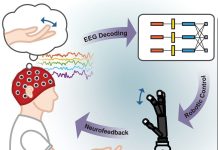
A groundbreaking study by researchers at Brigham and Women’s Hospital has indicated the presence of a common brain network among individuals with substance use disorder.
This extensive research, analyzing over 144 studies on addiction, has identified consistent abnormalities across various substances, pointing towards a potential network to target for neurostimulation therapies, a pivotal step in advancing treatment methods for addiction.
This study is published in Nature Mental Health.
The research team, led by Dr. Michael Fox, MD, Ph.D., and including researchers from various esteemed institutions, analyzed data from previous studies involving over 9,000 participants, studying the brain regions impacted by different substances like nicotine, alcohol, cocaine, and heroin.
They used a network mapping approach with an average wiring diagram to identify a common brain network across different substances and lesion locations.
Findings
Despite substantial variability in substance use disorder literature and neuroimaging, the researchers were able to identify a common brain circuit, indicating a potential to develop targeted treatments for addiction.
They found abnormalities in different brain regions implicated in addiction, which are all part of a common brain circuit.
The commonality of this network across varying substances suggests a unified approach to addressing addiction, paving the way for advanced, targeted neurostimulation therapies, such as transcranial magnetic stimulation, to treat addiction in clinical settings.
The discovery of a common brain network in substance use disorders provides newfound insight and a unified framework for understanding the neurological underpinnings of addiction.
The identification of this network holds significant potential for the development of targeted and effective treatment methodologies, including neurostimulation therapies, offering hope for more precise interventions in the battle against addiction.
However, it is crucial to note the study’s limitations, primarily due to its reliance on data from previous studies, rendering the findings as correlational rather than causal.
The diversity in brain imaging interpretation methods adds another layer of complexity to the data analysis.
Conclusion
Despite the complexities and limitations, this research represents a monumental step in brain circuit therapeutics and addiction studies, revealing the existence of a common brain network across different substance use disorders.
The convergence of data points and the identification of this common circuitry have bolstered the scientific community’s understanding of addiction’s neurological components and have opened the doors for more refined, targeted therapeutic interventions for substance use disorders.
The advanced understanding and the unified approach from this research are pivotal for the development of more effective treatment modalities for addiction.
If you care about opioids and pain, please read studies about what to ask your doctor before taking opioids and findings of opioid use in older people with dementia is linked to higher death risk.
For more information about opioids and health, please see recent studies about easier access to prescription opioids that may curb overdose deaths and results showing that this drug may relieve painful ‘long covid’ symptoms.
The research findings can be found in Nature Mental Health.
Follow us on Twitter for more articles about this topic.
Copyright © 2023 Knowridge Science Report. All rights reserved.



